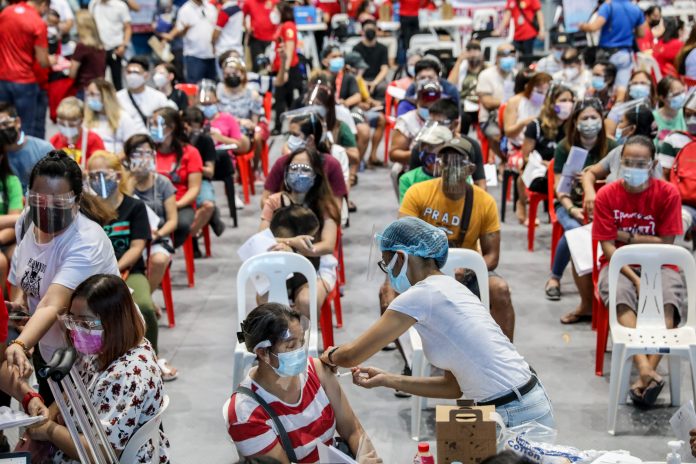The national capital region and nine other regions in the Philippines have been classified as “high risk” for COVID-19 due to the rising bed utilization rates of its health care facilities.
The Philippines on Thursday recorded 16,313 new COVID-19 infections, bringing the country’s active cases to 132,000, according to the Department of Health.
The figure is considered the 4th highest since the pandemic started in the Philippines last year. It is the 16th straight day that new cases topped 10,000.
The country has already recorded 1,899,200 total coronavirus cases, of which 131,921 or 6.9 percent are active. The positivity rate is at 24.9 percent, based on test results of samples from 65,903 individuals.
There were 236 new fatalities on Thursday, August 26, raising the country’s death toll to 32,728. It’s the 9th straight day that additional deaths counted more than 150.
Metro Manila’s intensive care unit (ICU) beds utilization rate rose to 77 percent from 73 percent the previous day as more hospitals declare full capacity. Nationwide, 75 percent of ICU beds are already occupied.
Dr. Alethea De Guzman, director of the health department’s Epidemiology Bureau, said that the current COVID-19 risk classification for all 17 localities in Metro Manila stems from the high bed utilization rates or nearly full intensive care units.
Data from the health department show that in the past two weeks, the average daily attack rate, which reflects the portion of the area’s population already infected with the virus, rose to 27.36 percent, nearly double the 14.99 percent it logged between July 29 and August 11.
The growth rate of cases in the capital region climbed by 10 percent to 63 percent in the past two weeks.









